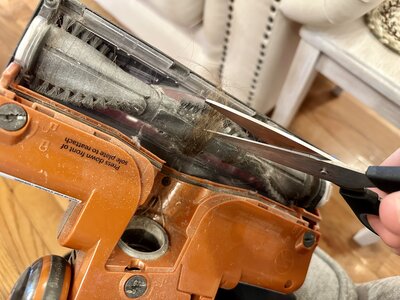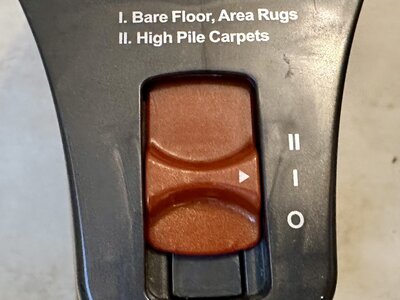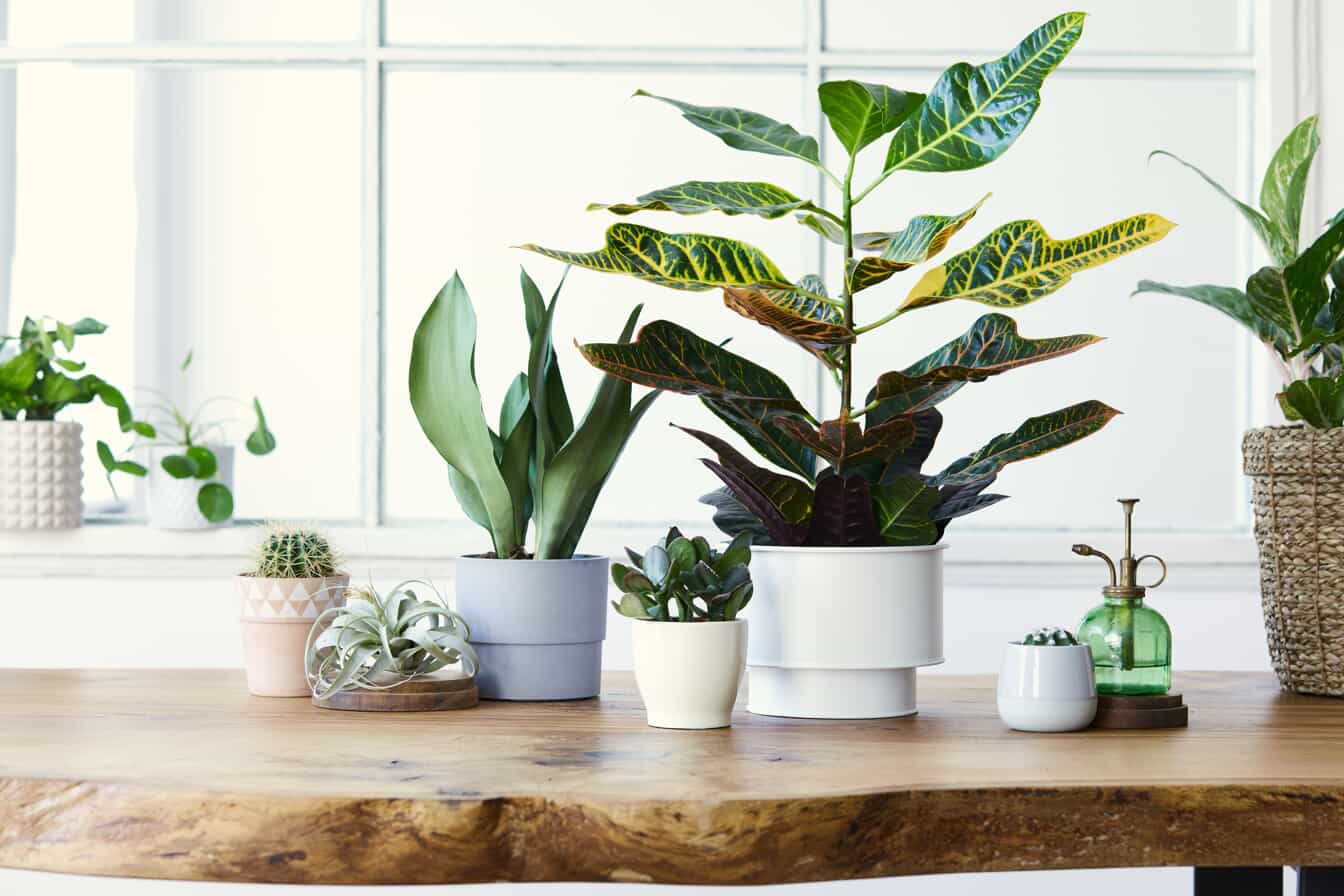How To Vacuum Properly Tips
Table of Contents
- 7 Helpful Tips for Vacuuming Your Carpet and Floor Properly
- Why Does Proper Vacuuming Matter?
- Frequently Asked Questions
- Contact Merry Maids!
Vacuuming is a must in any home, especially if you have carpet. Most people think there’s nothing to the process. You just plug the appliance in and go, right? Believe it or not, there is an art to learning how to vacuum properly.
That’s right; you may have been vacuuming the wrong way your entire life. Look at these vacuuming tips from the professionals to see how your skills stack up.
7 Helpful Tips for Vacuuming Your Carpet and Floor Properly
Tip 1: Keep a Vacuuming Routine
First things first, you should vacuum regularly. Do you typically wait to vacuum until your carpet or rug looks dirty? If so, you’re waiting too long.
When your floor coverings start to look soiled, they’re probably so caked with dust and dirt that they need a deep cleaning rather than a simple vacuuming. Avoid that hassle by making this chore a part of your regular cleaning schedule.
Vacuuming Frequency Recommendations
- High-traffic areas (hallways, entrances, living rooms): Vacuum 2-3 times per week.
- Low-traffic areas (bedrooms, offices): Vacuum at least once per week.
How Often Should I Vacuum with Pets?
Vacuum cleaning frequency might beg the question: how often should I vacuum with pets?
We recommend vacuuming at least once or twice per week. If you have several pets or your dog sheds a lot, daily vacuum might be necessary,
Tip 2: Prepare Your Vacuum
Your vacuum's performance depends on its condition.
Before you start:
- Empty the Bag/Canister. A full bag or canister reduces suction power. Empty it before each use.
- Check, Clean, and Change the Filters. Clean or replace filters regularly. Clogged filters restrict airflow. Some manufacturers recommend replacing the filter once a month. But check your owner's manual to be sure!
- Inspect & Clean the Brushroll. Remove any hair, strings, or debris wrapped around the brushroll. Have you never cleaned a brushrool before? You aren't alone - continue reading for a few helpful tips!
How to Clean the Brushroll
Most modern vacuums should have an easy way to clean the brushroll. In this instance, use a flathead screwdriver to remove the brush cover. Then, use scissors to cut the hair (follow the indentation along the brushroll).
Hopefully, this picture helps you visualize how easy it is to remove hair from your brushroll:

Tip 3: Adjust Your Vacuum's Height
Adjusting your vacuum's height is crucial for effective cleaning!
- High Pile Carpet. Set the vacuum to a higher setting to allow the brushroll to move freely.
- Low Pile Carpet. Use a lower setting for maximum contact with the carpet.
- No Adjustment? If your vacuum doesn't have height adjustments, ensure it suits your carpet type.
Here's an example of a vacuum's height adjuster:

In this instance, the vacuum is set at "Bare Floor" for vacuuming hardwood floors per the manufacturer's recommendations. The Bare Floor setting turns the brushroller off.
Tip 4: Master the Vacuuming Technique
Here are six considerations for vacuuming correctly for the best results:
- Direction. Vacuum in overlapping, straight lines. This ensures you cover the entire area.
- Speed. Move slowly and deliberately. Don't rush! This gives the vacuum time to lift dirt and debris.
- Passes. Make multiple passes over each area, especially in high-traffic zones.
- Forward & Backward. Go forward and then backward over the same area. Your vacuum's vibrations loosen any debris in the carpet fibers, so that dirt can be picked up when you make another pass.
- Overlap. Overlap each pass by a few inches to avoid missing any spots.
- Edges and Corners. Use crevice tools (AKA attachments!) to reach edges, corners, and along baseboards.
- Rugs. Vacuum rugs separately and consider turning off the brushroll if necessary.
Tip 5: Give High-Traffic Areas Extra "TLC"
Floors in hallways, foyers, mudrooms and living rooms typically see more action than other places in the home.
Naturally, that means more dirt and soil on carpets and hardwood floors will accrue. The frequency with which these spots need to be tended to will depend on how active your household is, so you may need to vacuum high-traffic areas as often as every other day or as little as twice a week.
Tip 6: Keep Your Vacuum Clean
Change the filters per the manufacturer's directions and empty the vacuum after every use. It's that simple! Your vacuum cleaner needs to have adequate airflow to function properly.
It’s essential to consider the inner workings of your appliance when thinking about how to vacuum. If you let the canister or vacuum bag fill to the brim before emptying it, your machine will be less effective.
In addition, learn how to clean your vacuum, from the canister to the base plate.
Tip 7: Use the Right Vacuum Cleaner
There are various vacuum cleaners on the market, some with beater bars and some without. A beater bar is a metal bar that beats the dust and debris out of the carpet. Beater bars are less common in modern vacuums.
Make sure you know which vacuum works best on your flooring. For example, carpets and area rugs with looped fibers or made from natural materials — like wool or silk — should not be vacuumed with beater bars. Use the bare floor setting for wool and silk, which turns the beater bar and/or brushroller off. Or, use the appropriate upholstery or crevice attachment.
In addition, you need to use the proper accessories for the job. Use a crevice tool to get corners and edges rather than ramming the vacuum into the baseboard. You should also use the proper attachments when cleaning furniture or drapes.
Why Does Proper Vacuuming Matter?
We've shared our helpful tips on proper vacuum cleaning. But if you're interested, let's talk briefly about "why" proper vacuuming is essential. News flash - vacuuming isn't just about appearances.
Here are three reasons why proper vacuum technique matters:
- Vacuuming Removes Dirt and Allergens. Vacuuming removes dust, dirt, pet dander, and other allergens that can get trapped in carpet fibers. Removing dust and debris improves your indoor air quality and reduces allergy symptoms.
- Protecting Your Carpet. Ground-in dirt acts like sandpaper, damaging your carpet fibers and causing them to wear down faster. Regular vacuuming prevents this damage and can increase your carpet's longevity.
- Maintaining Carpet Appearance. Proper vacuuming keeps your carpet looking its best, preventing matting and crushing.
Frequently Asked Questions
Why is my vacuum not picking up dirt well?
Common reasons your vacuum isn't picking up dirt include a full bag or canister, clogged filters, or a brushroll that isn't spinning properly. Check and maintain these components regularly.
Can I use my regular vacuum on hardwood floors?
Yes, you can vacuum your hardwood floors! Ensure the height setting is set to Bare Floor or per your vacuum manufacturer's directions.
What is the height adjustment on my vacuum?
The height adjustment on your vacuum controls how close the brushroll is to your carpet. You'll usually find it as a dial or lever near the vacuum head.
Setting it correctly is key:
- A higher setting is for thick carpets to let the brushroll move freely
- A lower setting is for thin carpets to maximize contact for effective cleaning.
The correct setting removes dirt properly without damaging your carpet or overworking the vacuum.
Need Routine Vacuuming Assistance? Merry Maids Can Help!
Now you know how to vacuum like a pro. But if you don’t feel like hoovering around the house, you can leave it to us!
Contact your local Merry Maids for some help with the housekeeping. Our cleaning professionals are happy to lend a hand, so you can spend less time running the vacuum and more time living your best life.













